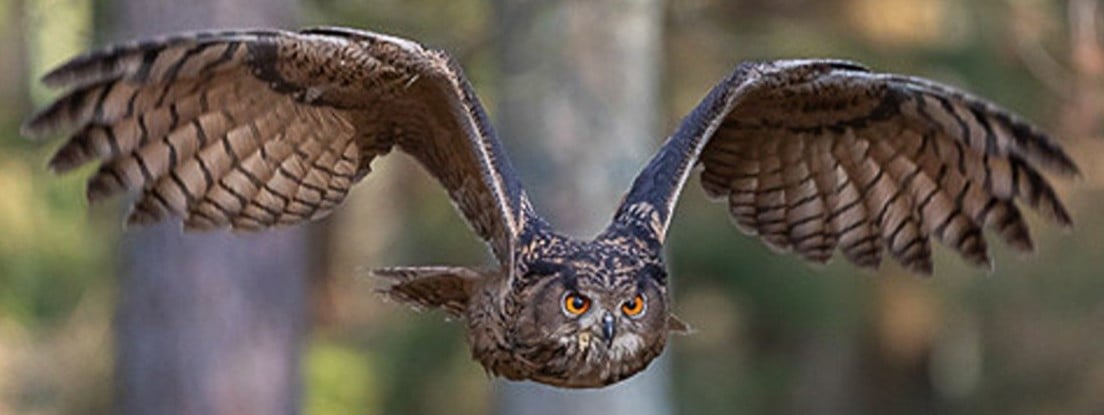A, i like that she's accidentally flipping us off
Superbowl
For owls that are superb.

US Wild Animal Rescue Database: Animal Help Now
International Wildlife Rescues: RescueShelter.com
Australia Rescue Help: WIRES
Germany-Austria-Switzerland-Italy Wild Bird Rescue: wildvogelhilfe.org
If you find an injured owl:
Note your exact location so the owl can be released back where it came from. Contact a licensed wildlife rehabilitation specialist to get correct advice and immediate assistance.
Minimize stress for the owl. If you can catch it, toss a towel or sweater over it and get it in a cardboard box or pet carrier. It should have room to be comfortable but not so much it can panic and injure itself. If you can’t catch it, keep people and animals away until help can come.
Do not give food or water! If you feed them the wrong thing or give them water improperly, you can accidentally kill them. It can also cause problems if they require anesthesia once help arrives, complicating procedures and costing valuable time.
If it is a baby owl, and it looks safe and uninjured, leave it be. Time on the ground is part of their growing up. They can fly to some extent and climb trees. If animals or people are nearby, put it up on a branch so it’s safe. If it’s injured, follow the above advice.
For more detailed help, see the OwlPages Rescue page.
Ooo that's true!
The owl even seems to be cooperating by keeping its eyes wide, though that might be a byproduct of the head pinch.
I don't think the pinch is doing it. They have upper and lower lids they can move independently. The big pupil looks very helpful though. Owls have voluntary control over pupil dilation, and can dilate them independently also. I've been curious if they have to use dilation drops on them like when I go to the eye doctor.
A quick search turns up results for dilating eyes during a vet visit, so it's definitely possible.
You inspired me to dive a little deeper into this, and it was very educational!
I found this video where a parrot gets a similar eye exam and the doctor discussed things with the bird's owner.
The first gave the bird midazolam, which makes it drowsy, and it also has a memory loss effect to minimize any kind of trauma from the procedure.
The machine the lady is holding is called a portable slit lamp, which is pretty much a microscope with a bright light that lets the doctor get a good look at the eye both externally and internally.
They also tested the pressure on the eye called a tonometer.
They did give the bird some type of eye drops for something, but I'm guessing it was lubrication, not dilation, for reasons I'll get into.
The small device the male doctor in my post is holding is basically a magnifying glass, though I couldn't find if it had a special name. It's used for quick spot checking. The doctor in the parrot video was making quick looks at areas of the eyes developing cataracts.
The parrot doctor said he recommended against treating its cataracts, because it wasn't causing any pain, and the drugs needed to dilate a bird's eyes are dangerous to use. Bird eyes have their voluntary dilation/constriction ability because unlike mammalian eyes, which are controlled by smooth muscle, which operates involuntarily, bird eyes are controlled by skeletal muscle. This is the same type of muscle used to flex their chest to breathe, so anything that would relax the muscles controlling the eyes would relax those muscles as well, creating a dangerous situation.
The parrot did not seem to drastically change its pupil size during the exam, I'm guessing from being sedated, so it did not seem necessary, though he did move into a darker room at one point.
The wiki on bird vision says this was a feature from their sauropsid ancestors. Very interesting stuff in that wiki too!
Oh interesting. I would not have expected their eyes and lungs to be controlled by the same muscle.
I don't believe it is the same muscle, just the same type of muscle. The video and a few other comments I read just made it sound like whatever medicine would relax the eye muscles would also affect critical muscles in other parts of the body.

This is all new info to me too, so don't take my word as 100% accurate on this particular matter, and even the doctor in the video is probably oversimplifying it for the lady.
A. You can see more of the cute owl.
I like her head pinch technique. 🤏

